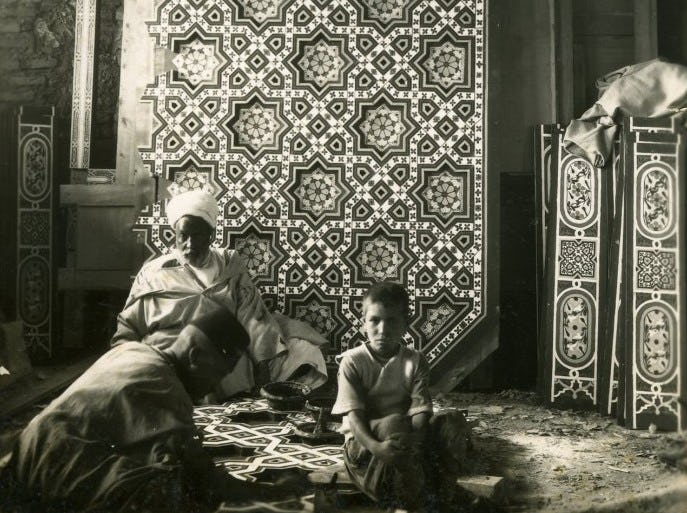Carved Plaster Archway with Vegetal and Floral Motifs
Date1937
PeriodKingdo of Morocco
MediumPlaster
DimensionsOverall: 30 x 52 in. (76.2 x 132.1cm)
ClassificationsStonework
Credit LineCourtesy of the Doris Duke Foundation for Islamic Art
Object number78.1
DescriptionThe plaster archway frames the entrance to the foyer at Shangri La. A central lotus motif is framed by swirling vegetal patterns and flanked with symmetrical eight-petaled flowers. This intricately carved plasterwork was created in 1937 by Moroccan craftsmen, a commission overseen by the Rabat-based design firm, S.A.L.A.M. René Martin. These craftsmen took creative measures to bring the traditional form of Moroccan art to Shangri La. Historically, plaster carvers worked in situ, delicately carving their designs in gypsum layered upon the wall. In order to transport the work to Hawaii, the craftsmen produced molds that were later cast in on site.Although yet to be determined, the skillful craftsmanship may be the work of the Najis, a family of artisans from Fez renowned for their skills in plaster carving. The Naji family are descendants of the Telmsani family. Maalem (master) Mohammed Telmsani Eissaoui founded the family business in 1928. This family business, today known as Arabesque, is especially well known for creating the plasterwork of the Moroccan Court at the Metropolitan Museum of Art.
On View
On viewCollections
20th century
17th century
19th century
19th - 20th century














